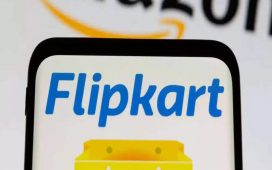
“We have an IP on this (charging connector). We are talking to multiple Original Equipment Manufacturers (OEMs) and told them if you want to adopt it, we will help fast-track that journey,” Phokela told PTI.
“Our engineers can come and work with your engineers so that you don’t have a steep learning curve. We have already made the investments. We already know technologies, we will just help you adopt,” Phokela told PTI.
He was responding to a query on if Ather is willing to share its expertise of its charging connector with other EV makers.
In October this year, the Bureau of Indian Standards (BIS) had approved Ather Energy’s indigenously developed AC and DC combined charging connector as standard for light electric vehicles (LEVs) — electric two- and three-wheelers, along with micro cars.
“We are not looking to charge money for this… If I take a larger philosophical view on this one, we do not want to compete on the infrastructure. We want to collaborate on the charging side and compete on the vehicle side. We want to fast-track the harmonisation of charging infrastructure,” Phokela said. He said Ather’s charging connector has only been defined as a standard and there is no obligation for any OEM to adopt it. “It is a flexible decision to take and not a mandate. They will come on board only if there is compatibility,” Phokela said.
Underlining the significance of having a standardised charging connector, he said, “What this allows the industry is that if you standardise the charging infrastructure, it harmonises the individual solutions that many other players have.”
This augurs well for the industry because if the charging infrastructure can be harmonised, it provides an incentive for independent businesses to set up infrastructure, Phokela added.
So far, in the absence of a harmonised standard, independent businesses who wanted to set up charging stations have been unsure as to for which EV maker the charging infrastructure must be set up. Now it also increases opportunities for chargepoint operators.
From a customer’s point of view, he said if more charging points are available, it addresses the range anxiety, as they can use their electric two-wheelers just like a conventional scooter.
Besides, it helps the government identify as to whom incentives should be given for developing charging infrastructure instead of looking at individual OEMs, he added.
Asked about Ather’s plans for increasing the charging network, he said, “We have about 1,600 charging locations. We have very strong plans for growth over the next few years. We hope to get about 2,500 charging stations by March 2024.”
In the next fiscal, Phokela said the number could go up to about 5,000.











